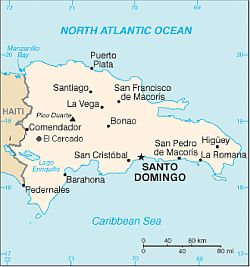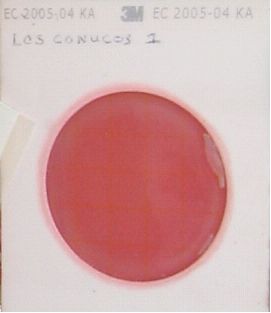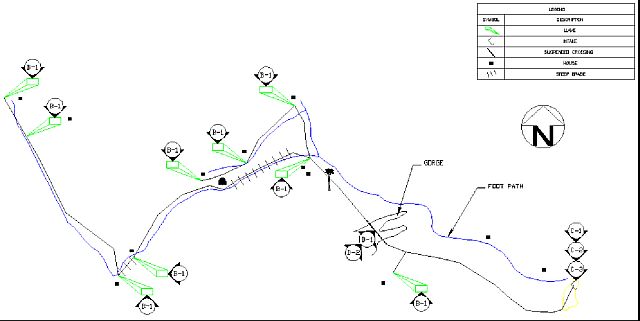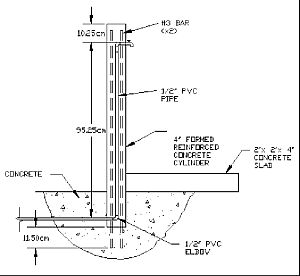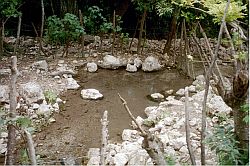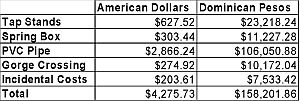
|
Team members: Andrew Kelsch, Civil Engineer Anthony Moraska, Environmental Engineer Noah Mundt, Environmental Engineer |
Gravity Fed Aqueduct System, International Senior Design, Dominican Republic CE 4905 Senior
Design Summer 2004 Introduction |
|
Background Ten families live in Los Conucos, with 30 to 40 people inhabiting the village on a consistent year round basis. This system is designed to adequately supply each of these families with the allotted amount of 10 gallons of water per person per day.
|
Survey and Route Selection PVC pipes will be
used for the distribution lines of the system, with exception to any gorge
crossings, areas where pipes will be exposed, or buried above the minimum
desired depth, for breakage protection purposes. Areas where these problems
occurred were avoided during the survey due to increased cost of galvanized
pipe. One gorge crossing was unavoidable, and designed to span the shortest
possible route for cost effectiveness. Illustrated by survey, changes
in the ground elevation required varying pipe diameters in order to maintain
enough pressure for the hydraulic grade line to remain above ground elevations.
This is crucial in gravity fed systems in order to maintain sufficient
pressure. Rocky ground that cannot be penetrated by the tools available Trees that must be avoided due to laws prohibiting the cutting of living trees Farmers fields that may be affected by the construction process could invariably have an adverse affect on the health of the family by destroying crops Large gorges that should be avoided if possible to keep costs down Housing units along the system that must remain Existing irrigation ditches that must remain undisturbed for future use in crop irrigation Fences around enclosures where livestock are held |
|
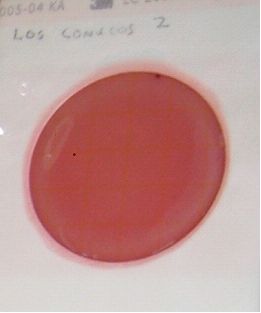
|
Water Testing Results Water testing was done on the spring in Los Conucos to determine the level of bacterial contamination of the spring. This was accomplished through the use of Total Coliform/E. Coli (TC/EC) 3-M Petrifilms containing Violet Red Bile (VBR) nutrients which indicate the presence, and an indicator that facilitates colony enumeration, to enable a count of total coliforms and Escherichia Coli bacteria present. The results (right) show the growth of one coliform colony (Los Conucos 2) of the two inoculated Petrilms prepared. Recommendations Emergency Disinfection Measures: Boiling – First clear the water by letting it settle and filter through a clean cloth. Boil the water vigorously for one full minute; boiling will kill all bacteria. Overboiling, however, can concentrate chemical impurities such as nitrates. Chlorine Bleach –
Add 10 drops of chlorine bleach to one quart of water, mix the treated
water thoroughly and let it stand for 30 minutes. If the water does not
have a slight chlorine odor, repeat the dosage and allow it to stand for
another 15 minutes. If the water tastes too strongly of chlorine, expose
it to the air for a few hours or pour it from one container to another
several times (www.bea.uga.edu).
|
Water Collection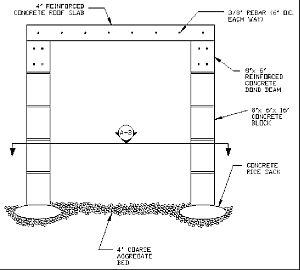
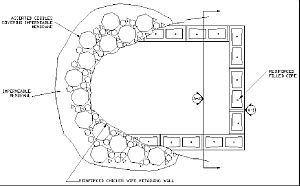
|
| Michigan Technological
University Department of Civil and Environmental Engineering 1400 Townsend Drive Houghton, Michigan, 49931 - 1295, USA Department Phone: 1-906-487-2520 Department Fax: 1-906-487-2943 Department E-mail: cee@mtu.edu |
